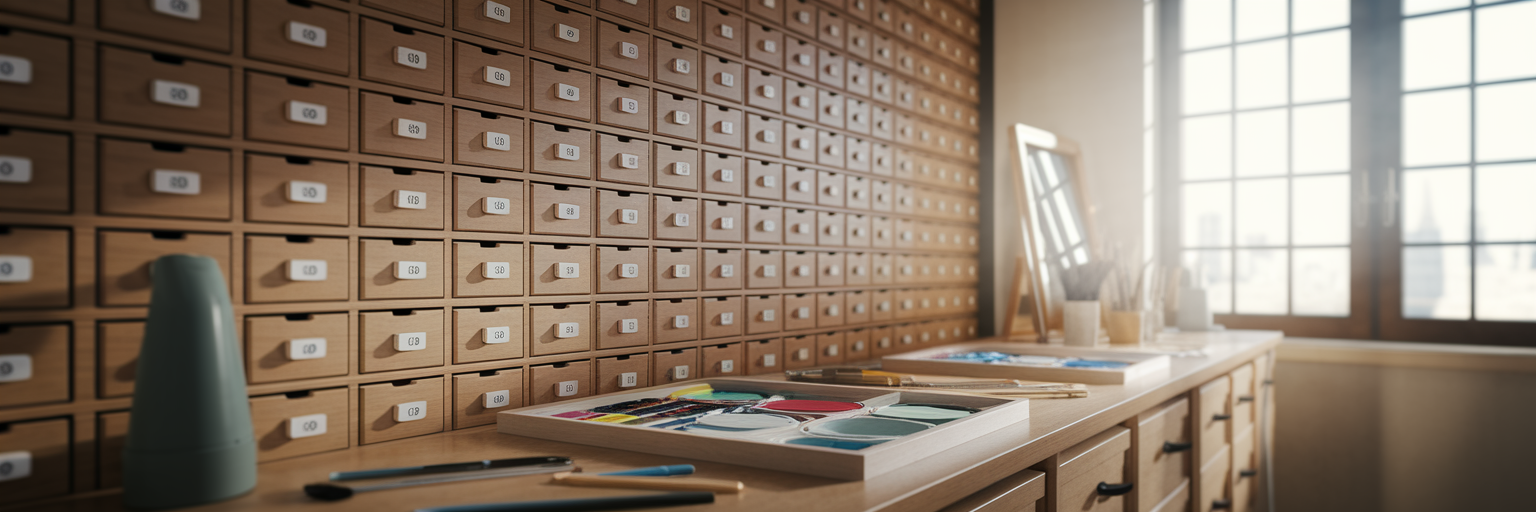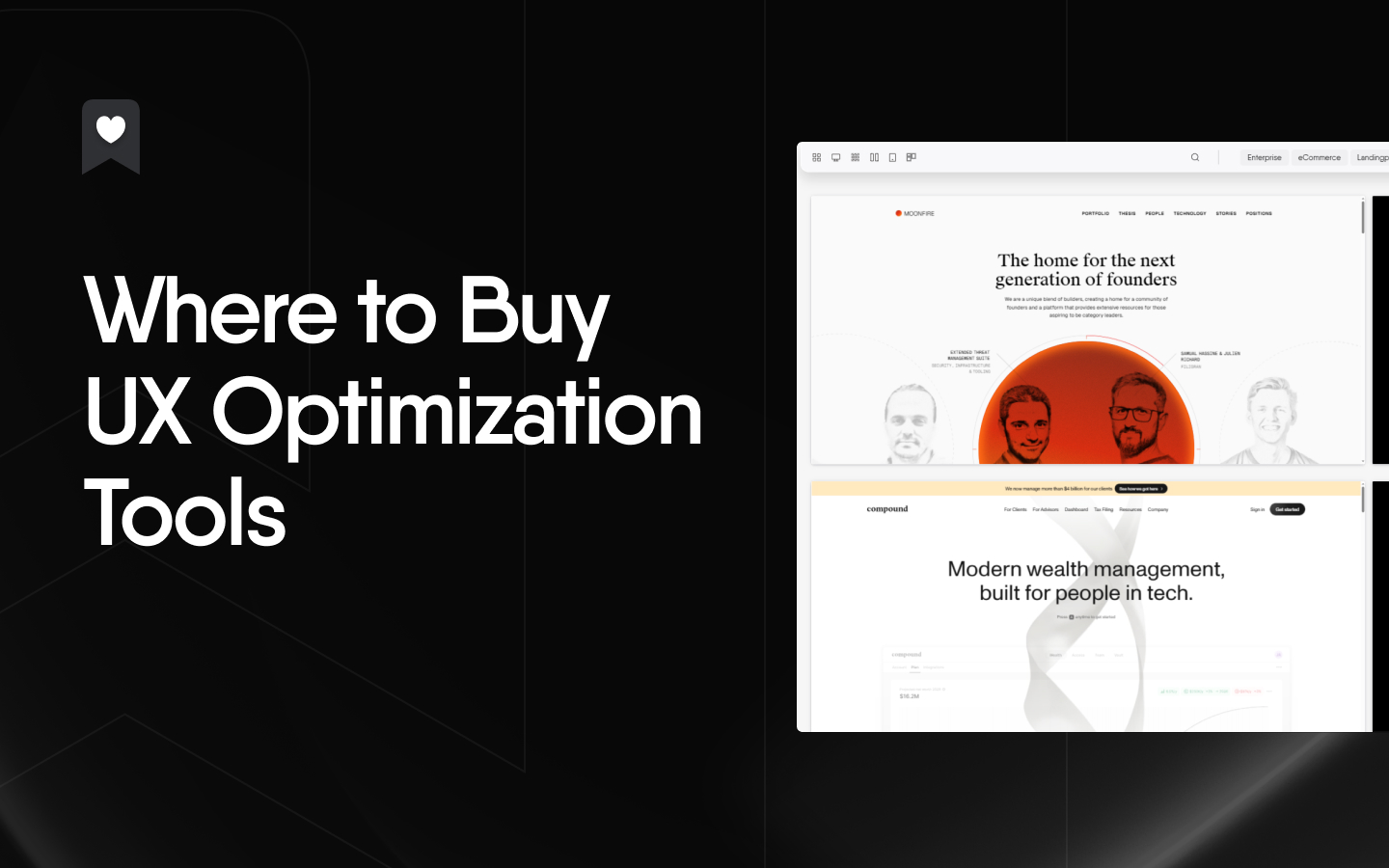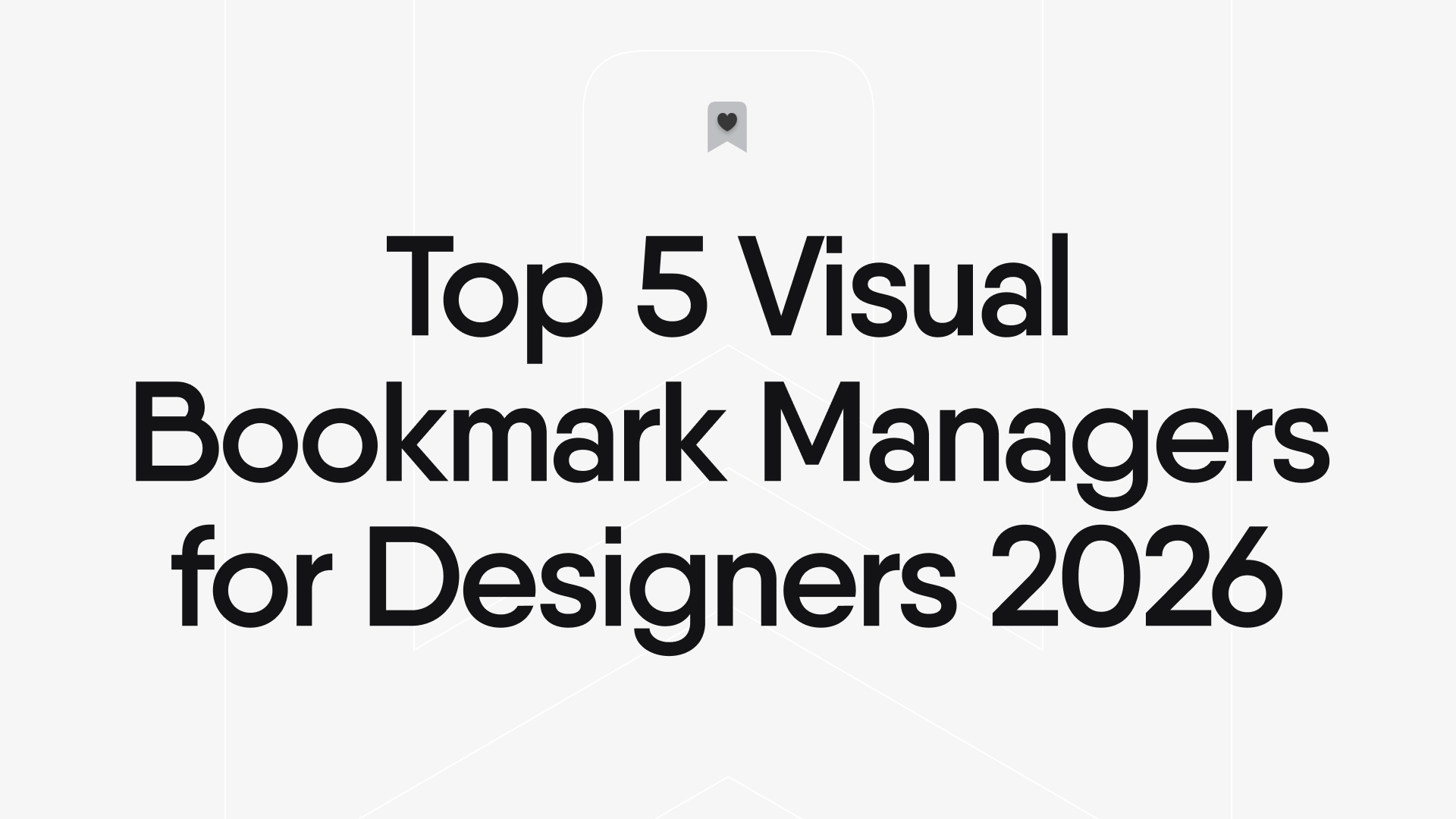The High Cost of Creative Chaos
We’ve all been there. You have 42 open tabs, a desktop littered with random screenshots, and that one perfect link is buried in a forgotten Slack channel. This isn't just a messy habit. It's a genuine bottleneck that adds friction to your creative process, slows you down, and causes brilliant ideas to vanish without a trace.
This digital disorganization is a universal frustration for designers and developers. Every minute spent hunting for a lost reference is a minute not spent designing, coding, or solving a client's problem. The real cost of this chaos is lost momentum and missed deadlines.
But what if organization wasn't about stifling creativity, but about channeling it? An efficient system to organize web design inspiration is a professional habit that builds the foundation for faster design projects. It transforms digital clutter into a streamlined, searchable library where your best ideas are always ready for action.
Let's explore five actionable strategies to get you there. These are not just tips but a new way of working, designed to give you more time for what truly matters: creating amazing work.
1. Build a Centralized Inspiration Hub

Imagine a chef trying to cook a meal with ingredients scattered across three different kitchens. It’s inefficient and chaotic. Yet, many creatives work this way, storing inspiration across Pinterest boards, local folders, browser bookmarks, and note-taking apps. The first step toward a better workflow is creating a single source of truth.
Consolidating everything into one dedicated space means you can find what you need instantly. No more saving duplicate links or wondering where you saw that perfect animation. This gives you a holistic view of all your assets, making it easier to connect ideas and spot patterns. When a new project kicks off, your research phase is already half-complete because your library is primed and ready.
Here’s an actionable first step: pick one central tool and spend the next 30 minutes migrating your ten most important bookmarks. A platform like Bookmarkify is built to be this exact hub, letting you save websites, images, and notes in one place. As a report from Forbes highlights, a centralized digital repository is a key strategy for designers to quickly locate relevant ideas. For more creative workflow tips, you can explore other articles on our blog.
2. Organize with Contextual Tags, Not Just Folders
Traditional folders have a fundamental flaw. A brilliant e-commerce checkout flow with minimalist typography gets stuck in either the "e-commerce" folder or the "minimalism" folder, but never both. This rigid structure hides its full context and limits its future usefulness.
A tag-based system, however, is a multi-dimensional solution perfect for mood board organization. Tags allow you to label an item with multiple pieces of context. You can filter your library by project ("#ClientX"), element ("#navigation"), style ("#brutalist"), or even a specific feature ("#dark-mode"). This mirrors how our brains actually connect ideas.
Tools like Bookmarkify, with unlimited tagging, are built for this exact workflow, helping you create a rich, filterable database. This is how you find the right inspiration at the right moment, dramatically speeding up your design process. For a library of curated examples, see how we organize content in our inspiration collections.
| Tag Category |
Example Tags |
Purpose |
| Element |
#header, #footer, #form, #button, #gallery |
Find specific UI components quickly. |
| Style |
#minimal, #brutalist, #vintage, #corporate |
Filter by aesthetic for mood boards. |
| Industry |
#saas, #ecommerce, #portfolio, #agency |
Reference designs relevant to a client's field. |
| Layout |
#grid, #single-page, #split-screen, #asymmetrical |
Analyze structural approaches. |
| Project |
#ProjectAlpha, #ClientXYZ, #Internal-UI-Kit |
Keep all project-specific references together. |
This table provides a starting point for a robust tagging taxonomy. The goal is to create a system that reflects how you think and search for inspiration.
3. Make Curation a Deliberate Creative Ritual

An un-curated library quickly becomes another source of clutter. The solution is to shift from a one-time organization sprint to an ongoing, valuable habit. Think of it not as a chore, but as a "creative ritual" that keeps your inspiration sharp and relevant.
Try a "Weekly Inspiration Review." Set aside 20 minutes each week to go through your saved items. Add contextual tags, refine your notes, and most importantly, delete what no longer inspires you. This keeps your library fresh and prevents digital hoarding.
This is also the time to move from passive to active inspiration gathering. Passive is just saving a link. Active is adding a note answering the question: "Why did I save this? What specific element caught my eye?" That small step adds immense value for your future self. To supplement this ritual, features like our Daily Inspiration feed deliver a fresh, curated dose of websites and apps, helping you stay on top of trends without the endless search.
4. Use Smart Tools for Deeper Visual Analysis
Great organization is about more than just storing links; it's about actively analyzing them. The best design inspiration tools help you understand the "how" and "why" behind a great design, saving you from manually using browser inspector tools for every site.
Look for features that allow you to deconstruct a design instantly. Key analytical capabilities include:
- Color Palette Extraction: Instantly see the hex codes used in a design.
- Font Identification: Discover the typography without digging into the CSS.
- Asset Inspection: Quickly view and save images used on a page.
Furthermore, a design's effectiveness changes dramatically across screens. The ability to toggle between desktop, tablet, and mobile previews for any saved site helps you make informed, responsive design choices from the start. The best bookmark manager for designers, like Bookmarkify with our Design Analyse feature and multiple view modes, empowers you to deconstruct inspiration on a deeper level. This leads to better decisions and faster iterations.
5. Standardize How You Share and Collaborate
We've all experienced the collaboration mess: a long list of links sent via email or Slack, with feedback scattered across threads and replies. This approach lacks context, creates confusion, and makes it impossible to track decisions. It’s a direct path to project delays.
The solution is to standardize how you present ideas. Create curated "collections" or "moodboards" for specific projects and share them via a single, unique URL. This ensures everyone, from teammates to clients, is looking at the same focused set of ideas in a clean, professional format.
This method streamlines feedback and avoids version control headaches. When comments are centralized and clear, there are fewer revision cycles, and approvals happen much faster. This simple change in process directly improves project velocity, contributing to faster design projects. Bookmarkify’s ability to share collections via a link is designed to solve this exact problem, making client presentations and team collaboration effortless.
From Clutter to Clarity: Start Your Streamlined Workflow Today
An organized inspiration system is not just about being tidy. It is a professional advantage that directly translates to faster project turnarounds, more confident design decisions, and less creative burnout. By implementing these strategies, you can reclaim your time and focus on what you do best.
To recap, the path to a more efficient workflow involves five key steps:
- Build a centralized library for all your inspiration.
- Use contextual tags instead of restrictive folders.
- Make curation a consistent creative habit.
- Leverage analysis tools to deconstruct designs.
- Standardize how you share inspiration with others.
Ready to turn chaos into clarity? Stop letting digital clutter slow you down. Start building your streamlined inspiration library today by trying Bookmarkify for free.












